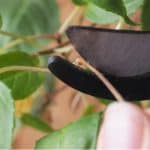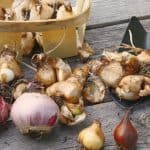Last updated on March 15th, 2022
Our site is reader supported, this means we may earn a small commission from Amazon and other affiliates when you buy through links on our site.
Fuchsias are versatile shrubs that can be used to create hedges or borders and even used in containers. Before you buy and start planting away, make sure you select a hardy variety, one that says as much on the label, varieties such as Magellanica, Fuchsia Riccartonii and Tom Thumb are good hardy varieties. Once you have narrowed down the options to only the hardy varieties, you still have many characteristics you can look for such as colour and eventual size. The flower colours can be found in all shades of pink, violet, red and even white. Flower shape can be equally as plentiful, with full-on doubles for the larger gardens, or single bell flowers for containers, and just about anything in between.
The leaves primarily come in green, but there are some variegated varieties, even some golden varieties such as Fuschia ‘Genii’ that you can enjoy in containers.
If you plan to make a hedge with your Fuchsias, you want something that is larger, perfect for the height and width you want, with Fuchsia Riccartonii being a good choice although it has smaller flowers than some of the other large-flowered varieties.
Planting Fuchsia
Plant in early summer to avoid spring frost damage
With these plants, you want to plant at the beginning of summer for the best results. If you plant them later in summer it will take more water to keep them going and you want them to establish a good root system as soon as possible so that they survive winter. While they are hardy, if you plant them in the spring or autumn it will leave them susceptible to damage from the cold and they might not make it through their first season.
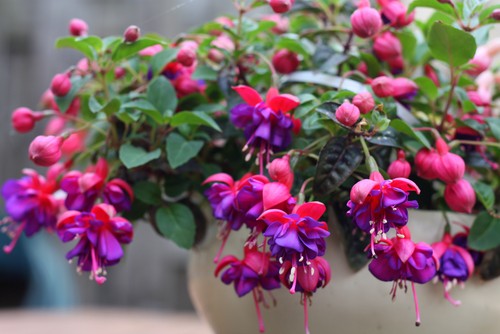
Plant in a sunny position or dappled shade in well-drained soil
They do best in sunny or dappled positions, particularly if you want a large showing of flowers. Soil can be just about anything, as long as the ground is never allowed to get too wet or too dry.
If you are picking Fuchsias for hedges, they will grow best in mild areas, so if you have a really cold winter where you live you might want to plant something stronger for your hedge. If, however, you live in southern England, along coastal Wales or Cumbria, they usually grow really well and make excellent hedges.
Plant slightly deeper than the root ball to protect the crown
If you are planting in your borders or in the ground, plant the base 5cm deeper than the current soil level and be sure to cover the lower part of the stems with soil. This will provide the crown with additional protection against the winter weather.
Container planting
If you are growing in a container or pot, pick a loam-based compost or peat-free multipurpose compost and follow the same process for planting as described above. They make excellent patio plants and you can try some of the more tender varieties and keep them in a greenhouse over winter.
General Care of Fuchsias
Feeding Fuchsias
Water when you first plant as you would do with any shrub and then feed annually with a general granular plant feed such as bonemeal, growmore, or fish blood and bone. Fuchsia need more protection than most hardy shrubs so mulch around the base in spring with a good layer of garden compost or farm manure to protect the crown and help with water retention.
If you, however, have container plants, apply a liquid fertiliser such as a general feed or even tomato feed from the middle of May through September based on the instructions printed on the container. The trick is not to promote new growth too early or too late when it would be at the risk of frost.
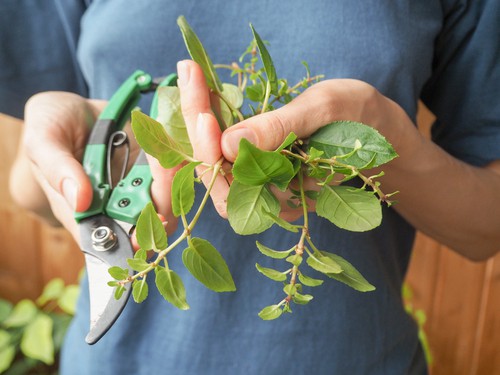
Deadheading Fuschsias
Deadhead the spent flowers if you want, but they will fall off on their own eventually. If you are lucky, some of them spent flowers will turn into purple berries, a fruit that can actually be eaten and used to be sold as sweets. All fruit from Fuchsias is edible although the quality and taste vary. You might get a tasteless fruit or a fruit that leaves behind an unpleasant aftertaste. In either case, the fruit can be used for jams, where the addition of sugar helps offset flavours.
Pruning Fuchsias
These plants are going to die back a bit in winter, so at the beginning of spring, you want to prune away any of the dead parts. Prune back to the live shoots or to the healthy buds on the stems lower down. Use sharp shears that have been properly sanitised and avoid damaging the new shoots when you trim.
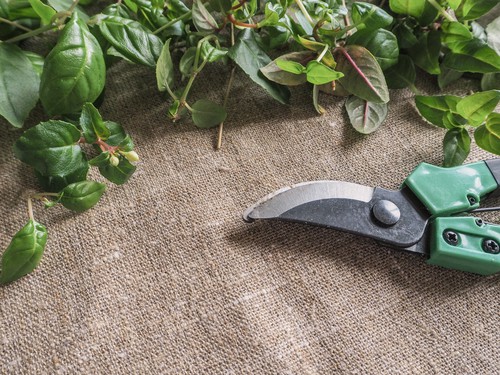
If you are using your Fuchsia as a hedge, you should prune back the side branches at the beginning of spring right as the new growth starts to appear. The idea is to keep both sides of the plant in a hedge like shape. If you need to do some heavy pruning, try to stagger it by trimming one plant per season, then the plant next to it the following season so that you can keep the screen shape. Something to note is that Fuchsia do respond well to hard pruning in spring to ground level so don’t be afraid to prune them back hard if you need to.
Propagating Fuchsias
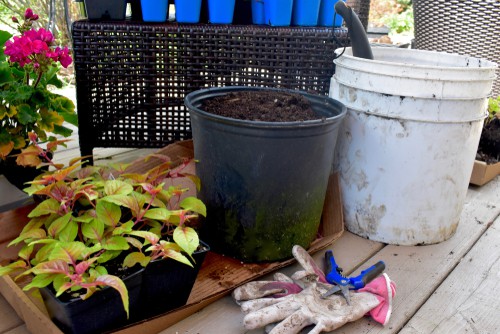
Taking hardwood cuttings
Step 1
Fuchsias can be propagated easily and using hardwood cuttings is the most effective way. For this, take pencil length stems at the end of autumn. Select stems that have a covering of brown woody bark because green stems will rot over winter. Cut at the base, below a pair of leaves, and trim one end so that you know the top from the bottom.
Step 2
Fill small pots (such as 13cm pots) with peat-free compost and pack the compost firmly. Then place the cuttings into the pots, about 3-6 in one pot all along the perimeter. You want to insert them deep enough so that half of the cutting is in the soil.
Step 3
Place them somewhere cool, like a greenhouse, for winter and keep the compost damp but not too wet, and more importantly, they need to be kept frost-free.
Step 4
You should see new shoots come spring, at which point you can move the cuttings into individual pots. Come early summer, pot them up into larger pots or plant them into their final positions once they have a substantial root system.
Feeding and Watering
Feeding only needs to take place once per year, in spring. You can use an all-purpose fertiliser if the growth is not what you wanted from your plant to give them a little boost but remember, Fuchsias are usually one of the last shrubs to shoot in spring so be patient and give them plenty of time to start shooting. Be sure to mulch annually too with garden compost or well-rotted manure to reduce water stress, improve nutrients in the soil, and protect the crown of the plant.
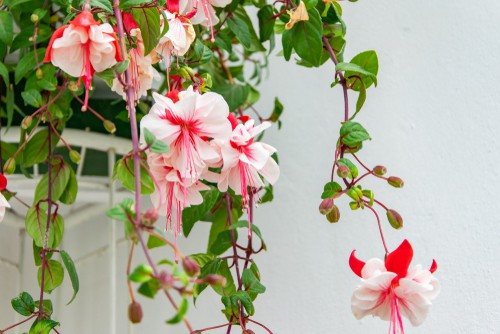
Once the plant is established, you should water it regularly in spring and summer. If the summers are especially hot with low rainfall, you can water more often than usual. If grown in pots they will need watering much more frequently.
Pests and Diseases
Vine weevil grubs and aphids
The most common pests include vine weevil grubs that eat the roots, although these are usually only an issue with Fuchsias grown in pots and aphids such as greenfly and whitefly. Aphids can be treated with a pesticide and sprayed at the first signs. Vine weevil can only really be controlled in pots by using a drench to soak the soil using Provado Ultimate Bug Killer.
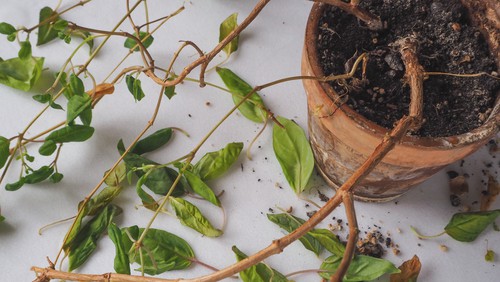
Rust
Another common problem is rust, which is a type of fungus that manifests as burnt orange/brown spots on the leaves. This is fairly common and infected leaves should be removed and burned. Spray with a fungicide at first signs with something like Fungus Clear Ultra or any spray that states that it treats rust.
Recommended Hardy Varieties
Fuchsia ‘Magellanica’ or Fuchsia ‘Riccartonii’ are best for hedges. Otherwise recommended varieties include Fuchsia ‘Pink Fizz’, Fuchsia ‘Giant-Flower’, Fuchsia ‘Shrimp Cocktail’, Fuchsia ‘Dollar Princess’, or the Fuchsia ‘Lady in Black’.

